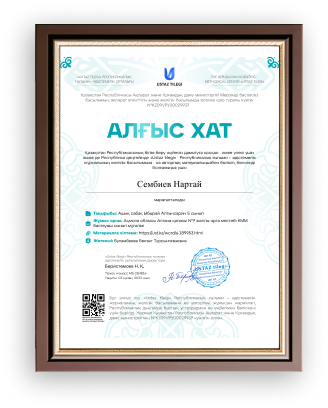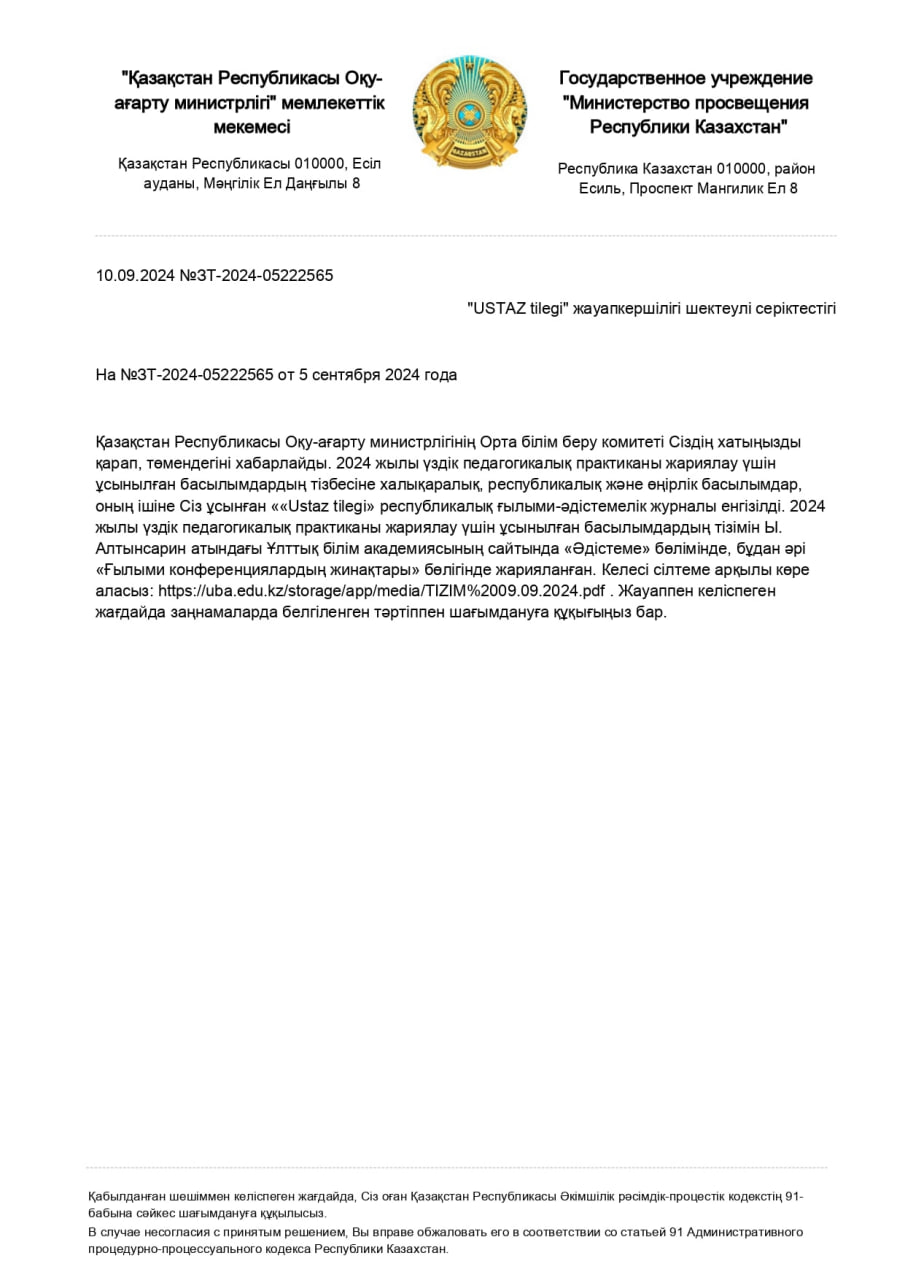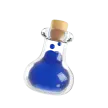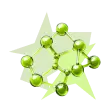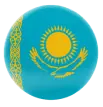Бұл материал сайт қолданушысы жариялаған. Материалдың ішінде жазылған барлық ақпаратқа жауапкершілікті жариялаған қолданушы жауап береді. Ұстаз тілегі тек ақпаратты таратуға қолдау көрсетеді. Егер материал сіздің авторлық құқығыңызды бұзған болса немесе басқа да себептермен сайттан өшіру керек деп ойласаңыз осында жазыңыз

Бонусты жинап картаңызға (kaspi Gold, Halyk bank) шығарып аласыз
1 жыл бойы тегін жүктеу мүмкіндігіне ие болыңыз!

жеңілдік
Blood types 8 class

|
Topic |
Blood types |
|
Date |
|
|
Class |
8 grade |
|
Teaching aims |
|
|
Content objectives |
By the end of the lesson students will be able to:
|
|
Language objectives |
Lexis: blood Type, Red blood cell, antigen, Rh factor, antigens on red, blood cells, Antibodies in plasma, can receive blood from, can donate blood to, agglutination, antibody, antigen, clumping, compatibility, donor, recipient. Functional language: comparing, explaining , discussing, analyzing, write the word in the map , describing |
|
Assessment |
|
|
Cognition |
working with definitions and doing research about the topic of “Blood Types” |
|
Culture |
understanding that topic of blood types is essential for human health |
|
Communication |
|
|
Content |
working with text about “blood types” and present understanding of the topic |
|
Materials |
|
|
Stage / Aim |
Time 40 m |
Procedure |
|
Lead in |
2 min |
T: Hello everyone. Please, I want you to sit down. I want you to open the copybooks and write down the date. Today’s lesson is going to focus on “Blood types”. After today’s lesson you will be able to explain the mechanism of agglutination and rhesus conflict. We will start with Explanation and we will finish with Activity. |
|
Warm up ( to set the context and activate prior knowledge) |
3 min |
T: Before we start I want you to open the books on page 44 and think about think why a person should know their blood type? Ss: students answer why you need to know your blood type. T: Well done. Now, Let’s work with new terminology. Each table has a table with new words. I want you to look at the new words and translate the words you know. (Attachment 1). Ss: students write translations of words that they know and discuss in groups and with the teacher. |
|
Presentation ( to present the Lymphatic system) |
12 min |
Now, moving on to Explanation let’s open the text on pages 56 and 57 and listen to me? ICQ: Do we have to read the text on page 50 оr 64? (56)? Do you have to read the text or listen to me? (Listen to you) Кровь одного человека отличается от крови другого? Секрет скрывается в микроскопических маркерах (также называемые антигенами или аглютиногенами) на поверхности красных кровяных клеток (эритроцитов) Организм при помощи этих антигенов (специальные белки и углеводы) воспринимает кровь как свою или чужеродную . т.е. при переливании крови организм ориентируется на эти микроскопические маркеры , соответственно при совпадении принимает новую кровь и отторгает ее при несовпадении. Существуют 4 основные группы крови, основанные на типе микроскопических маркеров: Группа крови О(I), эритроциты не имеют маркеров «А» или «В»; Группа крови A (II), эритроциты имеют маркер, известный как «А»; Группа крови B (III), эритроциты имеют маркер, известный как «В» Группа крови AB (IV), эритроциты имеют оба маркера «А» и «В» Резус – фактор У некоторых людей есть еще один дополнительный маркер, маркер «D», или резус – фактор) на красных кровяных клетках. Люди имеющие резус-фактор являются резус-положительными (Rh+). Те, у кого нет резус-фактора, резус-отрицательными (Rh-). Различные маркеры, обнаруженные в крови, составляют восемь возможных групп крови: О (I) Rh+, О (I) Rh-, А (II) Rh+, А(II) Rh-, В (III) Rh+, В(III) Rh-, АВ (IV) Rh+, АВ (IV) Rh- Переливание крови Если пациенту с группой крови А перельют кровьгруппы В, иммунная система воспримет кровь группы В как чужеродное, и соответственно против введенных В антиген выработает свои антитела (агглютинины). Все это приведет к агглютинации или склеиванию эритроцитов (красных кровяных телец). Комочки склеенных эритроцитов могут заблокировать мелкие кровеносные сосуды, что может привести к повреждению органов или даже смерти. |
|
Practice ( to consolidate the material, to check understanding of the topic) |
8 min |
T: Now let’s move on to practical activity. I want you to work in pairs and solve the task. Т: You have cards on the table with the task " Donor, Recipient» You must show with arrows the compatibility of blood groups for transfusion аnd answer the questions You can use the table on page 57. (Attachment 2).
Ss: Students do creative activity |
|
Production |
10 min |
T: Well done. Good job! Let's check your answer. Now I want you to tell me about the compatibility of blood groups. Ss: slide with the answer on the Board. Students respond at the blackboard). Front-end survey 1 How many blood types are there? 2. Каким группам можно переливать I группу крови? 3 Людей с какой группой крови называют универсальными донорами? 4. Почему обладателей IV группы крови называют универсальными реципиентами?
|
|
Reflection (to reflect on what they have studied) |
3 min |
T: Good job! Thank you. Now, I want you to take the stickers and write a review about the lesson (Attachment 3). |
|
Conclusion (to finish the lesson and set the homework) |
2 min |
Now, I’d like to recap. Today we have explored the topic of «Blood Types». The key thing to know is that there are four blood groups and blood group compatibility. For the next lesson, I want you to read the paragraph on pages 56 and 57 again and make the "Literacy" box. Remember that this homework is not optional, you must be ready for the next lesson. Have a nice day! I'll see you soon. |
Attachment 1
|
№ |
English |
Translation I know |
|
|
Blood Type |
|
|
|
Red blood cell |
|
|
|
Antigen |
|
|
|
Rh factor |
|
|
|
Antigens on red |
|
|
|
Blood cells |
|
|
|
Antibodies in plasma |
|
|
|
Can receive blood from |
|
|
|
Can donate blood to |
|
|
|
Agglutination |
|
|
|
Antibody |
|
|
|
Clumping |
|
|
|
Compatibility |
|
|
|
Donor |
|
|
|
Recipient |
|
|
№ |
English |
Translation |
|
|
Blood Type |
Тип крови |
|
|
Red blood cell |
Красные кровяные клетки |
|
|
Antigen |
Антиген |
|
|
Rh factor |
Резус фактор |
|
|
Blood cells |
Клетки крови |
|
|
Antibodies in plasma |
Антитела в плазме крови |
|
|
Can receive blood from |
Могут получать кровь |
|
|
Can donate blood to |
Могут давать кровь |
|
|
Agglutination |
Агглютинация |
|
|
Antibody |
Антитела |
|
|
Clumping |
Слипание |
|
|
Compatibility |
Совместимость |
|
|
Donor |
Донор |
|
|
Recipient |
Реципиент |
Attachment 2
You must show with arrows the compatibility of blood groups for transfusion.
You can use the table on page 57.

Whu can be a universal donor or recipient?
Why is it dangerous to give wrong blood type to a person?
What is your blood type? Which blood types cаn be given to you?
Attachment 2
You must show with arrows the compatibility of blood groups for transfusion.
You can use the table on page 57.

Whu can be a universal donor or recipient?
Why is it dangerous to give wrong blood type to a person?
What is your blood type? Which blood types cаn be given to you?
Attachment 3









Scaffolding for Presentation
|
Tips for giving Presentation Think about the aims of your presentation. Do you want to inform or entertain your audience? Think about your audience. Do they already know anything about the topic? Why are they listening to your presentation? Choose the most suitable content for them. Make eye contact with the audience and try to sound confident when you give your presentation. Make some notes and use these to remember what comes next, but don't just read things aloud. Speak in a loud, clear voice. Make sure you don't speak too quickly and rush your presentation. Useful language Starting a presentation
Introducing a topic
Handing over to another speaker
Ending the presentation
|
